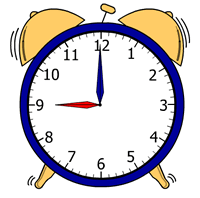Skip over navigation
The clocks below show some important times during Emma's day.

Or search by topic
Number and algebra
Geometry and measure
Probability and statistics
Working mathematically
Advanced mathematics
For younger learners
Time Line
Age 5 to 7
Challenge Level 





- Problem
- Getting Started
- Student Solutions
- Teachers' Resources
Time Line
The clocks below show some important times during Emma's day.
 |
 |
 |
 |
Using the times on the clocks, can you describe what you think Emma might do in a day?
Why do this problem?
This problem aims to link together telling the time with the concept of time passing. It offers practice for children in telling the time on an analogue clock but also allows them to be imaginative. Once pupils have made up their own descriptions, it might be appropriate to share some with the rest of the class. A few words could be written under a picture of each clock face to indicate what Emma was doing at that time. This would allow you to talk with the children about how much time had passed between different events.Key questions
Which clock tells the earliest time?
Which clock tells the latest time?
Can you order the clocks?
Perhaps you could think about what you do at each of these times?
Possible extension
Children could make four clock faces of their own to show special times in their day.You may also like
What Is the Time?
Can you put these times on the clocks in order? You might like to arrange them in a circle.

